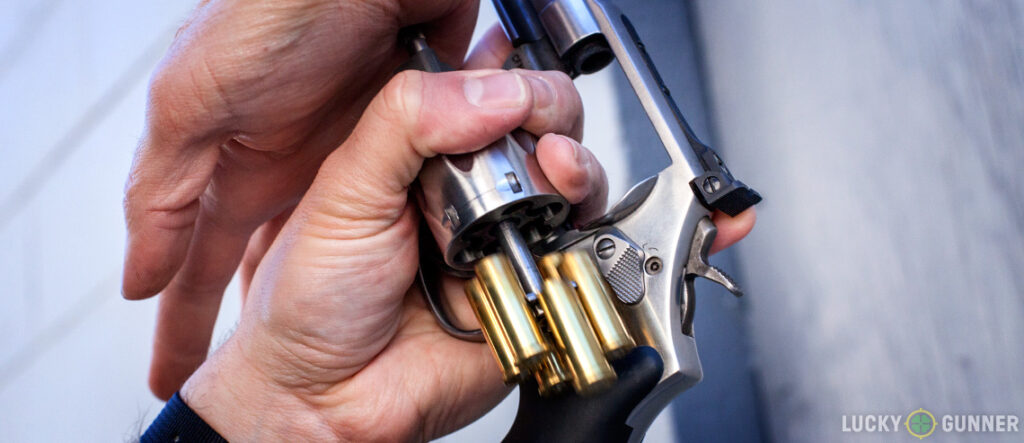
Since the beginning of this blog series, I’ve been trying to dig deeper into all of the issues that come up when we debate the merits of using a revolver versus a semi-auto for self-defense. One of the central points of this discussion always comes down to ammo capacity. Not only do semi-autos have more rounds on board, they’re also much quicker to reload.
Revolver speed loaders make the task a little easier than tediously inserting the cartridges one at a time. But even with a speed loader, technique is key. A trained monkey could eventually figure out how to swap magazines on an autoloader, but performing the same task with a revolver can be tricky.
Explaining how to reload a revolver is a task better suited for the magic of moving pictures rather than the written word. So enjoy the following educational film in which I cover four of the more common revolver reloading techniques.
How to Reload a Revolver: The Movie
My apologies for not including any left-handed techniques, but when I try to do them, I look a lot like the aforementioned trained monkey. If I get a chance to practice the lefty versions some more (or find a capable left-handed revolver shooting volunteer), I’ll post a follow-up.
Common Problems with Revolver Reloads
Even if you’ve found a reloading technique that works well for you most of the time, there are still plenty of ways to fumble a revolver reload. Most of the issues you’ll run into are related to incomplete extraction of the spent cartridges. In the video, I mentioned that this is one of the weakness of the FBI technique, but it can happen with the other techniques as well. It’s also pretty common to have problems with getting all of the fresh cartridges to drop completely into the chambers. If even one of the shells is just slightly peeking out of its chamber, the cylinder won’t close and you’ll have to fix the issue before you can fire.
Fortunately, the methods for fixing both of these problems are often the same. First, keep the revolver clean. In general, revolvers are pretty easy to maintain but they still have to be cleaned occasionally in order to work properly. The chambers get fouled up pretty quickly when the gun is fired. If you don’t clean them out regularly, cases won’t go in or out as easily.
The other thing to watch for is the orientation of the revolver during the reload. When extracting the cartridges, point the barrel up 90 degrees and let gravity help you out. When inserting the fresh cartridges, do the opposite and get the muzzle pointed at the ground. With a clean revolver firing lower pressure loads, the angle of the gun might not be so critical. But unless you’re a competition shooter, it’s a good idea to get in the habit of having gravity work for you in your reloads as much as possible.
One final issue that can hinder reloads is your choice in stocks/grips. Many of the grips available for revolvers will get in the way of a speed loader. For most speed loaders, the cartridges have to be perfectly in line with the cylinder, and not angled to the side, even a little bit. If your grips are too thick at the top, they won’t allow a speed loader to get close enough to the frame to drop the cartridges freely. Be sure to test this any time you switch grips or speed loaders before assuming that the new equipment will work.


